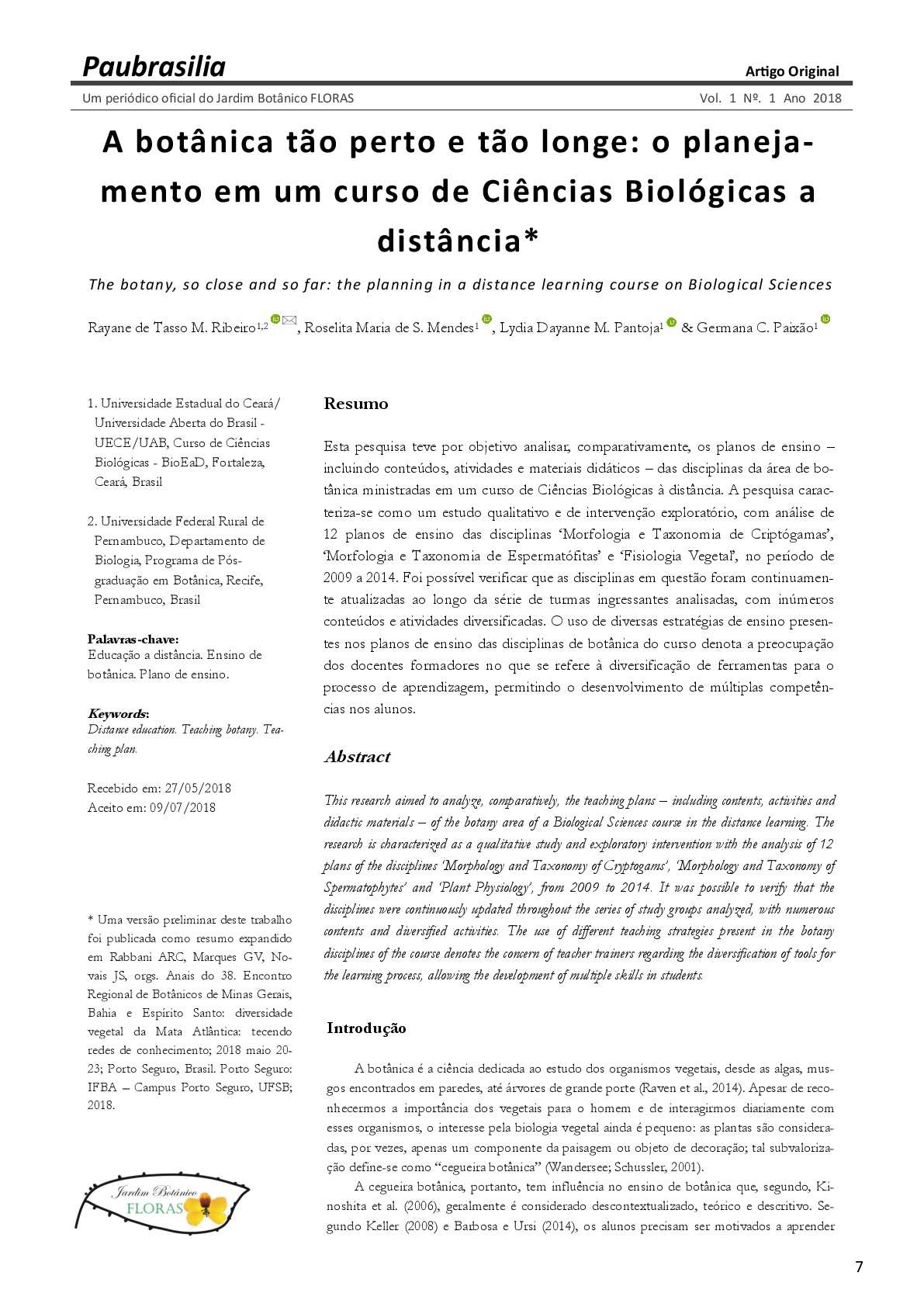The botany, so close and so far
the planning in a distance learning course on Biological Sciences
DOI:
https://doi.org/10.33447/paubrasilia.v1i1.4Keywords:
distance education, teaching botany, teaching planAbstract
This research aimed to analyze, comparatively, the teaching plans ‒ including contents, activities and didactic materials ‒ of the botany area of a Biological Sciences course in the distance learning. The research is characterized as a qualitative study and exploratory intervention with the analysis of 12 plans of the disciplines ‘Morphology and Taxonomy of Cryptogams’, ‘Morphology and Taxonomy of Spermatophytes’ and ‘Plant Physiology’, from 2009 to 2014. It was possible to verify that the disciplines were continuously updated throughout the series of study groups analyzed, with numerous contents and diversified activities. The use of different teaching strategies present in the botany disciplines of the course denotes the concern of teacher trainers regarding the diversification of tools for the learning process, allowing the development of multiple skills in students.

Downloads
Published
How to Cite
Conference Proceedings Volume
Section
License
By submitting manuscripts for publication in the journal, authors expressly agree to the following terms:
1 - Authors retain copyright on their manuscript and grant the right of first publication to the journal, with the work simultaneously licensed under the Creative Commons Attribution 4.0 International License, allowing it to be shared, as long as authorship and initial publication in Paubrasilia are acknowledged, with proper indication of volume, number (if any), page number (or elocation-id), and year in which the paper was published;
2 - Authors are allowed to enter into additional contracts separately, for non-exclusive distribution of the version of the paper published in Paubrasilia (e.g., publishing in an institutional repository or as a book chapter), provided that authorship and initial publication in this journal are acknowledged, with proper indication of volume, number (if any), page number (or elocation-id), and year in which the paper was published.










